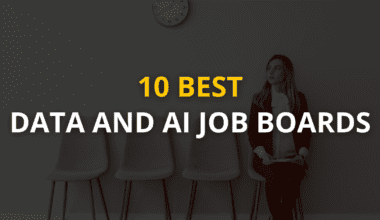Summary: The Generative AI Value Chain consists of essential components that facilitate the development and deployment of Generative AI technologies. Key elements include computer hardware, cloud platforms, foundation models, model hubs, applications, and support services. Understanding this value chain is crucial for businesses aiming to leverage Generative AI effectively.
Introduction
Generative AI has emerged as a transformative force in the technology landscape, enabling machines to create new content—be it text, images, or audio—based on user prompts. As I delve into the Generative AI Value Chain, it’s striking to see its rapid growth and profound impact on various industries.
The global Generative AI market is projected to exceed $66.62 billion by the end of 2024, reflecting a remarkable increase from $29 billion in 2022. Notably, 92% of Fortune 500 companies have already adopted Generative AI technologies, showcasing their potential to revolutionize operations.
With a compound annual growth rate (CAGR) of 46.47%, Generative AI is not just a trend; it’s reshaping how businesses operate and innovate, making it essential to understand this evolving value chain.
This framework outlines the various stages and components where value is added to Generative AI systems, from foundational hardware to end-user applications.
Key Takeaways
- The Generative AI Value Chain includes hardware, cloud platforms, and foundation models.
- Foundation models serve as building blocks for various Generative AI applications.
- Cloud platforms provide scalable infrastructure for resource-intensive Generative AI processes.
- APIs simplify integration of Generative AI features into existing products.
- Ethical considerations are critical for responsible deployment of Generative AI technologies.
The Components of the Generative AI Value Chain
The Generative AI Value Chain is a framework that outlines the various stages and components involved in creating and deploying Generative AI systems. This value chain encompasses everything from the foundational hardware to the end-user applications. As Generative AI continues to evolve, understanding its components is crucial for businesses looking to leverage this technology effectively.
Computer Hardware
At the core of any Generative AI system lies the computer hardware, which provides the necessary computational power to process large datasets and execute complex algorithms. The primary components include:
Graphics Processing Units (GPUs)
These are specially designed for parallel processing, making them ideal for training deep learning models. Companies like NVIDIA dominate this space, continually innovating to enhance performance and efficiency.
Tensor Processing Units (TPUs)
Developed by Google, TPUs are optimized for Machine Learning tasks, providing even greater efficiency than traditional GPUs for specific applications.
High-Performance Computing (HPC) Clusters
These clusters combine multiple GPUs or TPUs to handle extensive computations required for training large generative models.
The demand for advanced hardware continues to grow as organisations seek to develop more sophisticated Generative AI applications.
Cloud Platforms
Given the resource-intensive nature of Generative AI, cloud platforms play a pivotal role in providing scalable infrastructure for development and processing. Key aspects include:
Scalability
Cloud platforms allow businesses to scale their computational resources up or down based on demand without significant capital investment in physical hardware.
Cost Efficiency
By utilizing cloud services, organisations can reduce costs related to maintaining their own data centers while benefiting from access to powerful computing capabilities on a pay-as-you-go basis.
Major cloud service providers such as Amazon Web Services (AWS), Microsoft Azure, and Google Cloud offer tailored solutions for Generative AI workloads, facilitating easier adoption of these technologies.
Foundation Models
Foundation models are pre-trained deep learning models that serve as the backbone for various generative applications. Their significance lies in:
Pre-training
Foundation models are trained on vast datasets to learn patterns and structures inherent in language or images. This pre-training process enables them to generate coherent and contextually relevant outputs.
Fine-tuning
After pre-training, these models can be fine-tuned with specific datasets to adapt them for particular tasks or industries, enhancing their performance in targeted applications.
Examples of foundation models include OpenAI’s GPT-3 and DALL-E, which have set benchmarks in natural language processing and image generation, respectively.
Model Hubs and MLOps
Model hubs serve as repositories where developers can access pre-trained models, facilitating collaboration and innovation within the Generative AI ecosystem. Key components include:
Model Hubs
These platforms host a variety of pre-trained models, making it easier for developers to find suitable models for their applications.
MLOps (Machine Learning Operations)
MLOps encompasses practices that streamline the deployment and management of Machine Learning models in production environments. This includes version control, monitoring model performance, and ensuring compliance with regulatory standards.
By implementing effective MLOps practices, organisations can enhance their ability to manage Machine Learning workflows efficiently.
Applications
The application layer is where Generative AI technologies are put into practice, delivering tangible benefits across various domains. Notable applications include:
Text Generation
Tools like ChatGPT enable users to generate human-like text responses based on prompts, facilitating content creation and customer support.
Image Generation
Applications such as DALL-E allow users to create unique images from textual descriptions, revolutionizing creative processes in design and marketing.
Industry-Specific Solutions
Many businesses are developing tailored applications that leverage Generative AI for specific use cases, such as legal document drafting or automated report generation.
The growing diversity of applications showcases the versatility of Generative AI technologies across industries.
Services
As organisations adopt Generative AI technologies, there is an increasing need for services that support implementation and optimization. Key service areas include:
Consulting Services
Experts can provide guidance on best practices for integrating Generative AI into existing workflows and systems.
Training and Support
Companies may require training sessions for employees or ongoing support to ensure successful adoption of these technologies.
Service providers play a critical role in helping organisations navigate the complexities associated with deploying Generative AI solutions effectively.
Current State of the Generative AI Value Chain
In recent years, particularly throughout 2023, there has been a significant acceleration in the adoption of Generative AI technologies across various industries.
A survey indicated that over 26% of companies using AI have already integrated generative capabilities into their strategies. This surge reflects a growing confidence in the potential benefits of Generative AI as businesses seek innovative solutions to enhance their operations.
Key Trends Shaping the Generative AI Value Chain
The Generative AI Value Chain is experiencing rapid evolution, driven by technological advancements and changing market dynamics. As businesses increasingly adopt Generative AI solutions, several key trends are emerging that are reshaping the landscape.
Increased Investment
Companies are planning substantial increases in their investments in Generative AI technologies, indicating a strong belief in their transformative capabilities.
Accessibility Improvements
The shift towards application programming interfaces (APIs) has lowered entry barriers for companies looking to incorporate generative features into their products.
Diverse Market Opportunities
While established tech giants currently dominate many areas within the value chain, there are significant opportunities for startups and new entrants focused on niche applications or specialized data use cases.
Future Outlook
As we look ahead, several trends are likely to shape the future of the Generative AI Value Chain. There may be a move towards standardizing model development processes, making it easier for companies to collaborate and innovate within this space. The application layer is expected to grow rapidly as more businesses explore how they can leverage generative capabilities tailored to their specific needs.
As more players enter the market—from hardware manufacturers to application developers—collaboration will become increasingly important in driving innovation forward.
Conclusion
The Generative AI Value Chain represents a complex yet rewarding ecosystem that encompasses various components essential for developing and deploying innovative solutions. From specialized hardware and scalable cloud platforms to foundation models and end-user applications, each segment plays a vital role in shaping how businesses harness this transformative technology.
As organisations continue to explore opportunities within this value chain, they will need to navigate challenges while capitalizing on emerging trends that promise significant advancements in efficiency and creativity across industries.
Frequently Asked Questions
What is Generative AI?
Generative AI refers to Artificial Intelligence systems capable of creating new content—such as text or images—based on input prompts from users. Examples include ChatGPT for text generation and DALL-E for image creation.
What are Foundation Models?
Foundation models are large pre-trained deep learning models that serve as building blocks for various applications in Generative AI. They learn patterns from extensive datasets before being fine-tuned for specific tasks or industries.
How Does Cloud Computing Support Generative AI?
Cloud computing provides scalable infrastructure necessary for resource-intensive tasks like training large models. It allows businesses access to powerful computational resources without significant upfront investments in hardware, facilitating easier adoption of generative technologies.



